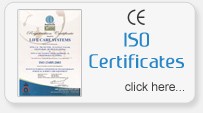

Interferential Therapy
The effects of tissue stimulation with these 'medium frequency' currents (medium frequency in electromedical terms is usually considered to be 1KHz-100KHz) has yet to be established. It is unlikely to do nothing at all, but in terms of current practice, little is known of its physiological effects. It is not capable of direct stimulation of nerve in the common context of such stimulation.
Physiotherapy Interferential therapy utilizes two of these medium frequency currents, passed through the tissues simultaneously, where they are set up so that their paths cross & they literally interfere with each other. This interference gives rise to an interference (beat frequency) which has the characteristics of low frequency stimulation � in effect the interference mimics a low frequency stimulation.
The exact frequency of the resultant beat frequency can be controlled by the input frequencies. If for example, one current was at 4000Hz and its companion current at 3900Hz, the resultant beat frequency would be at 100Hz, carried on a medium frequency 3950Hz amplitude modulated current.
By careful manipulation of the input currents it is possible to achieve any beat frequency that you might wish to use clinically. Modern machines usually offer frequencies of 1-150Hz, though some offer a choice of up to 250Hz or more. To a greater extent, the therapist does not have to concern themselves with the input frequencies, but simply with the appropriate beat frequency which is selected directly from the machine.
Virtually all interferential clinical units are supplied with carbon rubber electrodes. The clinician should be aware that either water soaked sponges or a conducting gel should always be used between the electrode and the tissue. This will insure a uniform contact and provide for even disbursement of the current over the entire surface area of the electrode. If water only is used as a conductive agent, pooling may occur with resulting dry spots under the electrode. The current will then become intensified at the site of best conduction, the water pools, with little or no current flow elsewhere. With "true interferential therapy device" units this could result in over stimulation of tissue under the water pools and even possible tissue burns as depolarized tissue will not be able to sense the over stimulation.
While some ift interferential still offer the vacuum electrode system, many clinicians have discontinued their use. Extra maintenance, tissue bruising and uneven current flow have been cited as reasons for a reduction in the popularity of vacuum systems.
Self adhesive electrodes are rapidly becoming the favorite of clinicians due to the ease of use, patient acceptance and elimination of possible cross-contamination. Difficult to apply areas such as shoulders, hips and the cervical spine are easily treated with the self-adhesive electrodes. Also, recent improvements in adhesive agents have made longer use possible and prices have been reduced substantially.
If carbon rubber electrodes are used, care should be taken to insure proper current flow. When conductive gels are used, the gel will create a glaze over the surface of the electrodes with long-term use. The glaze may prevent the flow of current over the entire electrode surface. Cleaning the electrode periodically with a mild soap and water and soft brush is recommended. It is not a good practice to use conducting mist sprays in lieu of other conducting agents. This is due to the saline content of the sprays which has been shown to destroy the carbon content of the electrode, thus rendering the electrode useless.
Intensity oF Current
Interferential therapy unit provides a comfortable, soothing stimulation and should never be strong enough to cause any discomfort to the patient. Higher intensities should not be
considered "better" as far as obtaining results. It is important to note that once the patients comfort level is established at the onset of therapy, the intensity should not be increased during the treatment.

